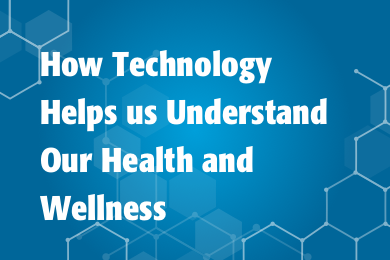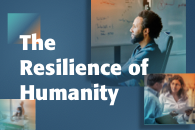December 1, 2022
The effects of climate change are visible across the globe. How can IEEE, and its 400,000 members, help combat it?
That was the question on the mind of 2022 IEEE President-Elect Saifur Rahman as he traveled to Sharm El-Sheikh Egypt for COP27, the United Nation’s annual climate change meeting
He’s been involved in climate change policy since 1992, when he followed the debates and discussions at the Earth Summit in Rio de Janeiro. That inspired him to establish the Center for Energy and the Global Environment at Virginia Tech, where he is currently a professor. In 2019, he helped to launch the IEEE Sustainable Power and Energy Conference in China, and he now chairs the IEEE Board of Directors’ Ad Hoc Committee to Coordinate IEEE’s Response to Climate Change (CCIRCC).
So we asked him how he viewed IEEE’s role in these global efforts. “IEEE‘s members are responsible citizens, and want to help advance technology for humanity and therefore seek to help address today’s challenges with technological solutions,” Rahman, an IEEE Life Fellow, said. “They see the effects of extreme weather, changes in weather patterns, crop losses and sea level rise all around them. It’s natural for them to want to contribute.”
How can IEEE encourage its members to research, promote and advocate for decarbonization technologies?
It starts at the local level beginning with awareness building. This is where IEEE can play a big role. IEEE has resources which can help its members answer the big questions. In addition to a large number of targeted publications, conferences and workshops focusing on climate change issues, IEEE has recently launched the IEEE Climate Change Collection, which is a repository of more than 7,000 IEEE articles addressing the causes of climate change along with strategies to mitigate and adapt to it. In addition, IEEE has just launched – coinciding with the UN Climate Change Conference COP27 – the IEEE Climate Change website, www.ieeeclimatechange.org.
What do you hope one of the outcomes of IEEE’s participation in COP27 will be?
I met different country delegations, and I participated in four events, including speaking at a side event titled “The Global Engineering View: Delivering an Equitable, Sustainable and Low Carbon Resilient World.”
The other events were hosted by the International Renewable Energy Agency’s Energy Transition Education Network; The Global Association of Universities on Climate. I also took part in a seminar on the global pathway to carbon neutrality hosted on Energy Day at COP27.
All my talks and presentations focused on current and emerging technologies relevant to climate change mitigation and adaptation.
We have over 340 IEEE Sections around the world where engineers, technologists and computer scientists can deliver technology solutions to the global community. Our hope is that IEEE’s participation in COP27 will result in global recognition of IEEE as a force for change, and as an organization that can respond to the needs from the local to national levels and help implement policies adopted during the COP27 Conference.
There are, seemingly, new technologies to combat climate change being developed nearly every day. How can IEEE contribute to the sharing of information?
Innovations come to the attention of IEEE through its conferences, workshops and publications. One of the biggest roadblocks in the field may be maintaining relevant and comprehensive information. We can eliminate this roadblock by continuously updating the IEEE Climate Change collection and promoting the availability of this information to all interested parties globally.
IEEE sees its role in climate change as one of a convener – bringing people together to discuss relevant issues. What does that mean to you, and how does that play out in real life?
As the world’s largest technical professional organization, IEEE has both the opportunity and the responsibility to assist in organizing the response of engineers, scientists, and technical professionals across the world to address the causes, mitigate the impact and adapt to climate change. In this context, IEEE has been and is reaching out to all major engineering and technology societies in the Americas, Europe, Africa and Asia to identify areas of collaboration and portfolios of solutions to address the climate change challenge. Our organization has the credibility to bring experts to the table to present diverse viewpoints and seek common solutions.
In-Depth: What are quadruped robots used for, and how does that impact their design? Those questions are answered in this article from the IEEE Robotics and Automation Society magazine.
What would be one thing you would suggest to help towards solving climate change?
IEEE welcomes volunteers and members across the globe to join in contributing their experience and insights so that together we can explore and discover solutions to address climate change. We encourage our community to be contributors and influencers for climate action through research, knowledge sharing, technology advancements, solutions development and much more.




 Meaningful Momentum or Running in Place?
Meaningful Momentum or Running in Place? AI Through Our Ages
AI Through Our Ages Liquid Infrastructure: Our Planet's Most Precious Resource
Liquid Infrastructure: Our Planet's Most Precious Resource The Impact of Technology in 2025
The Impact of Technology in 2025 Quantum and AI: Safeguards or Threats to Cybersecurity?
Quantum and AI: Safeguards or Threats to Cybersecurity? Why AI Can't Live Without Us
Why AI Can't Live Without Us Bits, Bytes, Buildings and Bridges: Digital-Driven Infrastructure
Bits, Bytes, Buildings and Bridges: Digital-Driven Infrastructure Impact of Technology in 2024
Impact of Technology in 2024 Emerging AI Cybersecurity Challenges and Solutions
Emerging AI Cybersecurity Challenges and Solutions The Skies are Unlimited
The Skies are Unlimited Smart Cities 2030: How Tech is Reshaping Urbanscapes
Smart Cities 2030: How Tech is Reshaping Urbanscapes Impact of Technology 2023
Impact of Technology 2023 Cybersecurity for Life-Changing Innovations
Cybersecurity for Life-Changing Innovations Smarter Wearables Healthier Life
Smarter Wearables Healthier Life Infrastructure In Motion
Infrastructure In Motion The Impact of Tech in 2022 and Beyond
The Impact of Tech in 2022 and Beyond Cybersecurity, Technology and Protecting Our World
Cybersecurity, Technology and Protecting Our World How Technology Helps us Understand Our Health and Wellness
How Technology Helps us Understand Our Health and Wellness The Resilience of Humanity
The Resilience of Humanity Harnessing and Sustaining our Natural Resources
Harnessing and Sustaining our Natural Resources Creating Healthy Spaces Through Technology
Creating Healthy Spaces Through Technology Exceptional Infrastructure Challenges, Technology and Humanity
Exceptional Infrastructure Challenges, Technology and Humanity The Global Impact of IEEE's 802 Standards
The Global Impact of IEEE's 802 Standards Scenes of our Cyber Lives: The Security Threats and Technology Solutions Protecting Us
Scenes of our Cyber Lives: The Security Threats and Technology Solutions Protecting Us How Millennial Parents are Embracing Health and Wellness Technologies for Their Generation Alpha Kids
How Millennial Parents are Embracing Health and Wellness Technologies for Their Generation Alpha Kids Space Exploration, Technology and Our Lives
Space Exploration, Technology and Our Lives Global Innovation and the Environment
Global Innovation and the Environment How Technology, Privacy and Security are Changing Each Other (And Us)
How Technology, Privacy and Security are Changing Each Other (And Us) Find us in booth 31506, LVCC South Hall 3 and experience the Technology Moon Walk
Find us in booth 31506, LVCC South Hall 3 and experience the Technology Moon Walk Virtual and Mixed Reality
Virtual and Mixed Reality How Robots are Improving our Health
How Robots are Improving our Health IEEE Experts and the Robots They are Teaching
IEEE Experts and the Robots They are Teaching See how millennial parents around the world see AI impacting the lives of their tech-infused offspring
See how millennial parents around the world see AI impacting the lives of their tech-infused offspring Take the journey from farm to table and learn how IoT will help us reach the rising demand for food production
Take the journey from farm to table and learn how IoT will help us reach the rising demand for food production Watch technical experts discuss the latest cyber threats
Watch technical experts discuss the latest cyber threats Explore how researchers, teachers, explorers, healthcare and medical professionals use immersive technologies
Explore how researchers, teachers, explorers, healthcare and medical professionals use immersive technologies Follow the timeline to see how Generation AI will be impacted by technology
Follow the timeline to see how Generation AI will be impacted by technology Learn how your IoT data can be used by experiencing a day in a connected life
Learn how your IoT data can be used by experiencing a day in a connected life Listen to technical experts discuss the biggest security threats today
Listen to technical experts discuss the biggest security threats today See how tech has influenced and evolved with the Games
See how tech has influenced and evolved with the Games Enter our virtual home to explore the IoT (Internet of Things) technologies
Enter our virtual home to explore the IoT (Internet of Things) technologies Explore an interactive map showcasing exciting innovations in robotics
Explore an interactive map showcasing exciting innovations in robotics Interactively explore A.I. in recent Hollywood movies
Interactively explore A.I. in recent Hollywood movies Get immersed in technologies that will improve patients' lives
Get immersed in technologies that will improve patients' lives